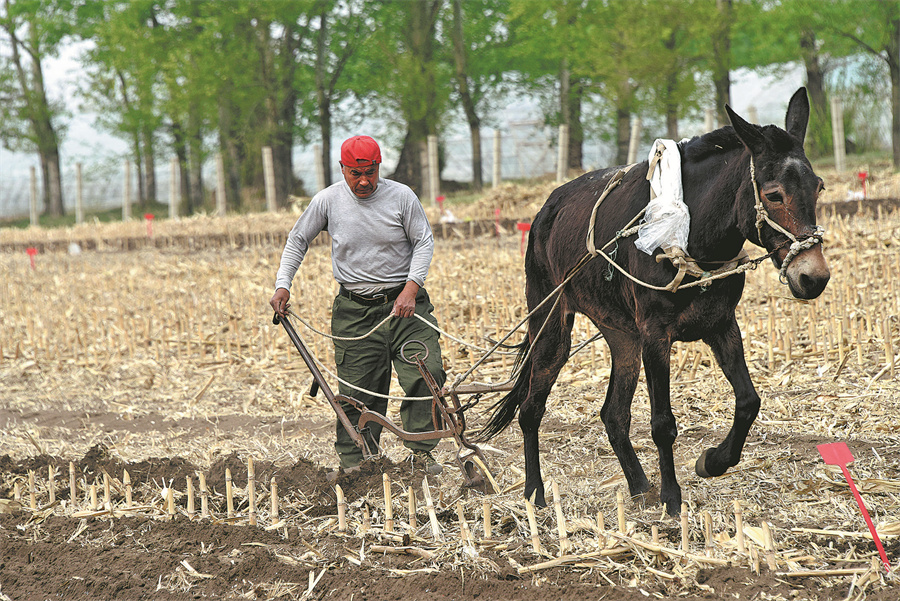Land management model restoring nation's black soil
Food security dependent on protecting fertile growing grounds


For years, Jia has walked in the fields with colleagues, considering the issue of land degradation in black soil areas from the perspective of farmers and agricultural sustainability. The Northeast Institute of Geography and Agroecology of the CAS, where he works, launched a science and technological research campaign in 2021 to prevent land degradation in black soil areas and increase yields.
Northeast China is one of the world's four major black soil regions, with the others being in Ukraine, the United States and Argentina.
From the 1950s, the black soil in Northeast China attracted a large number of settlers, transforming the plain from the once unknown "northern wasteland" into an important commercial grain production base known as China's "northern granary".
However, in the 1990s, a growing number of farmers, including those in Lishu county, Jilin province, a major maize-producing county, found that the black soil was revealing yellow layers, and grain yields began to decline.
A 2020 survey revealed that the thickness of the black soil layer in Northeast China had decreased by 30 to 50 percent compared to half a century earlier, with some areas having less than 20 cm of black soil, and decreasing at a rate of 1 to 2 millimeters per year.
"Increasingly intensified activities of farming practices and natural factors leading to soil erosion have caused the black soil layer to thin and the organic matter content to decline. The problem of thinning, impoverishment and hardening of black soil in Northeast China has become prominent," said Jia, who is also the chief engineer of the Sci-Tech Innovation Campaign for the Black Soil Granary of the CAS.























